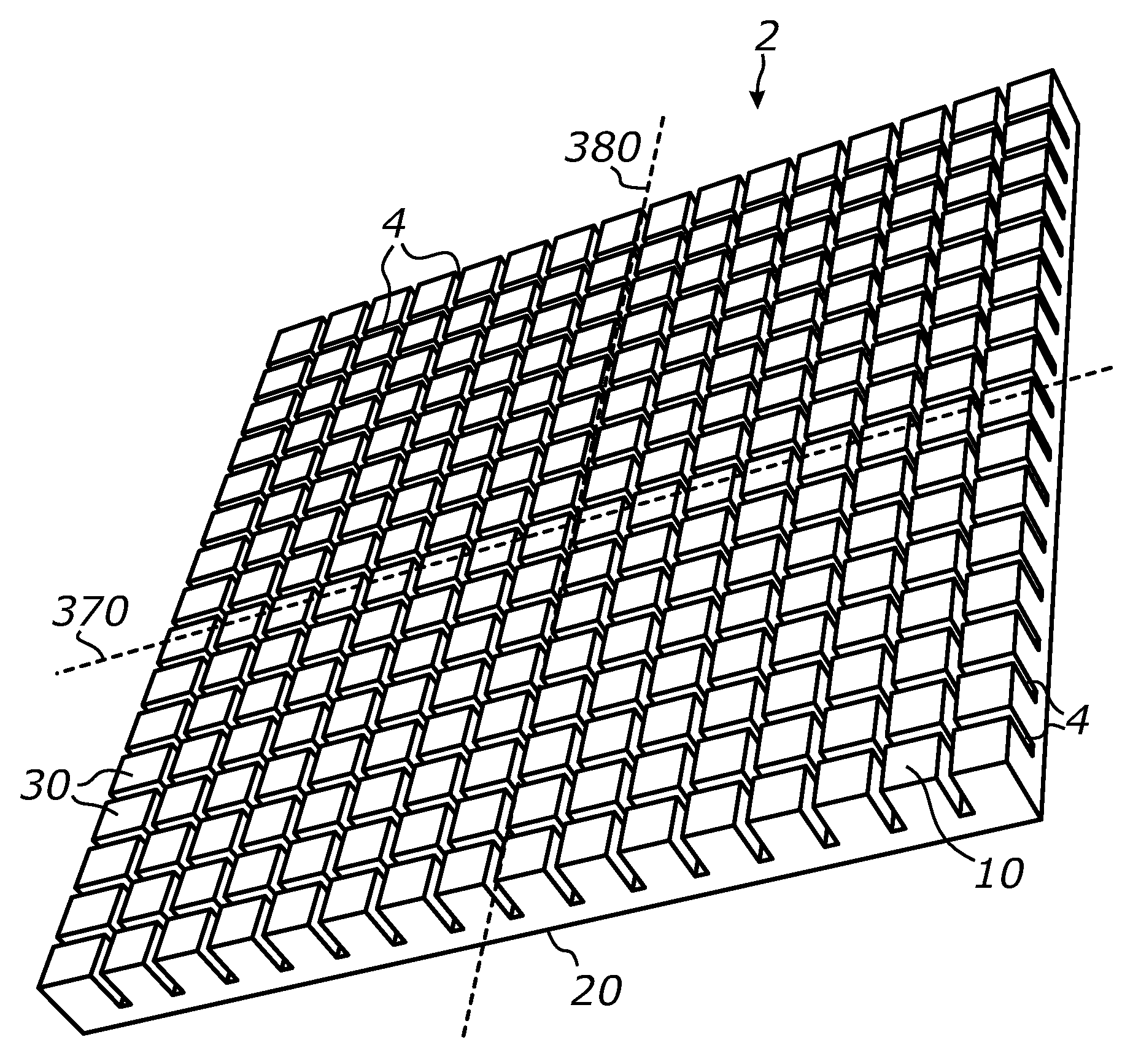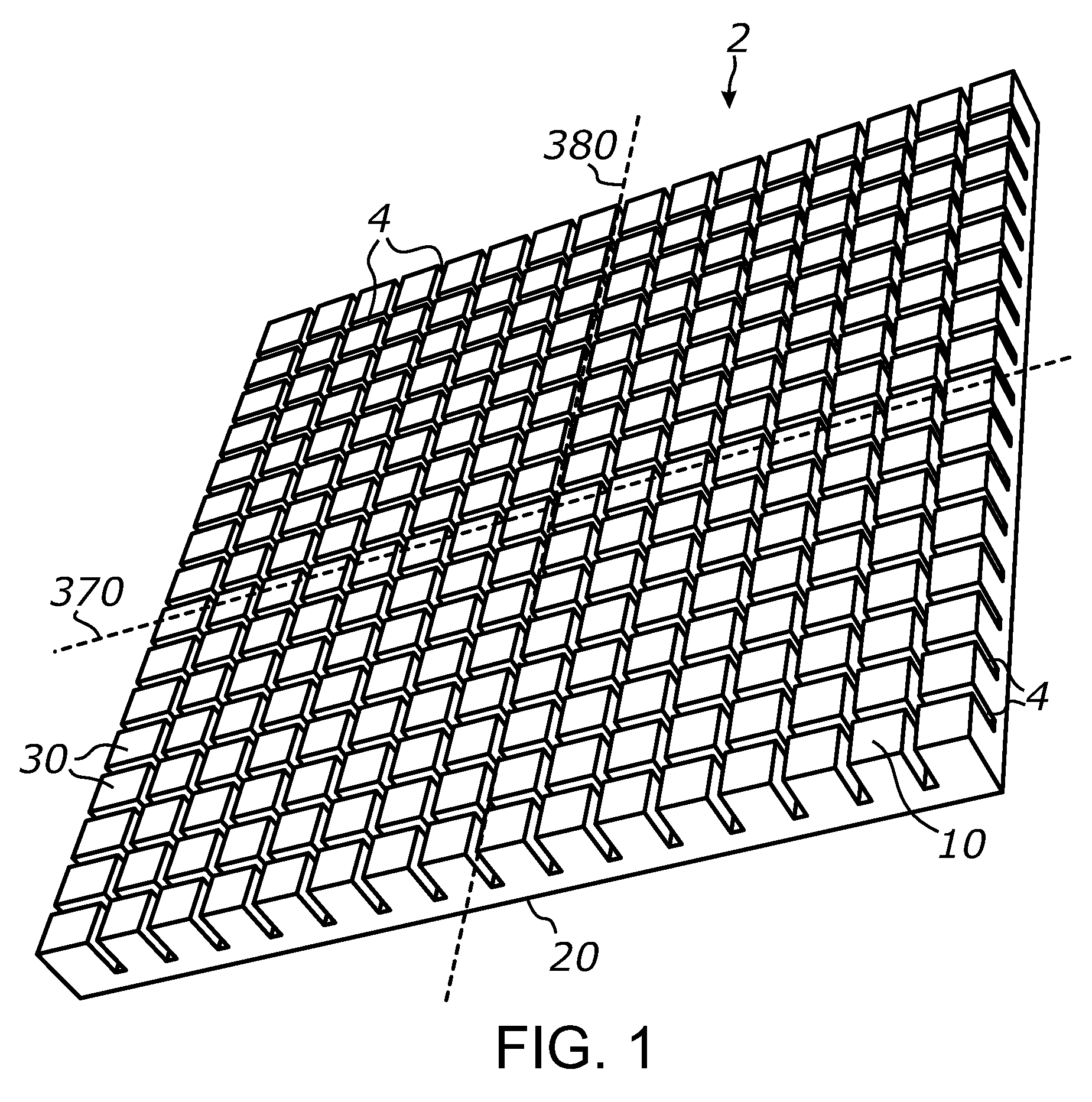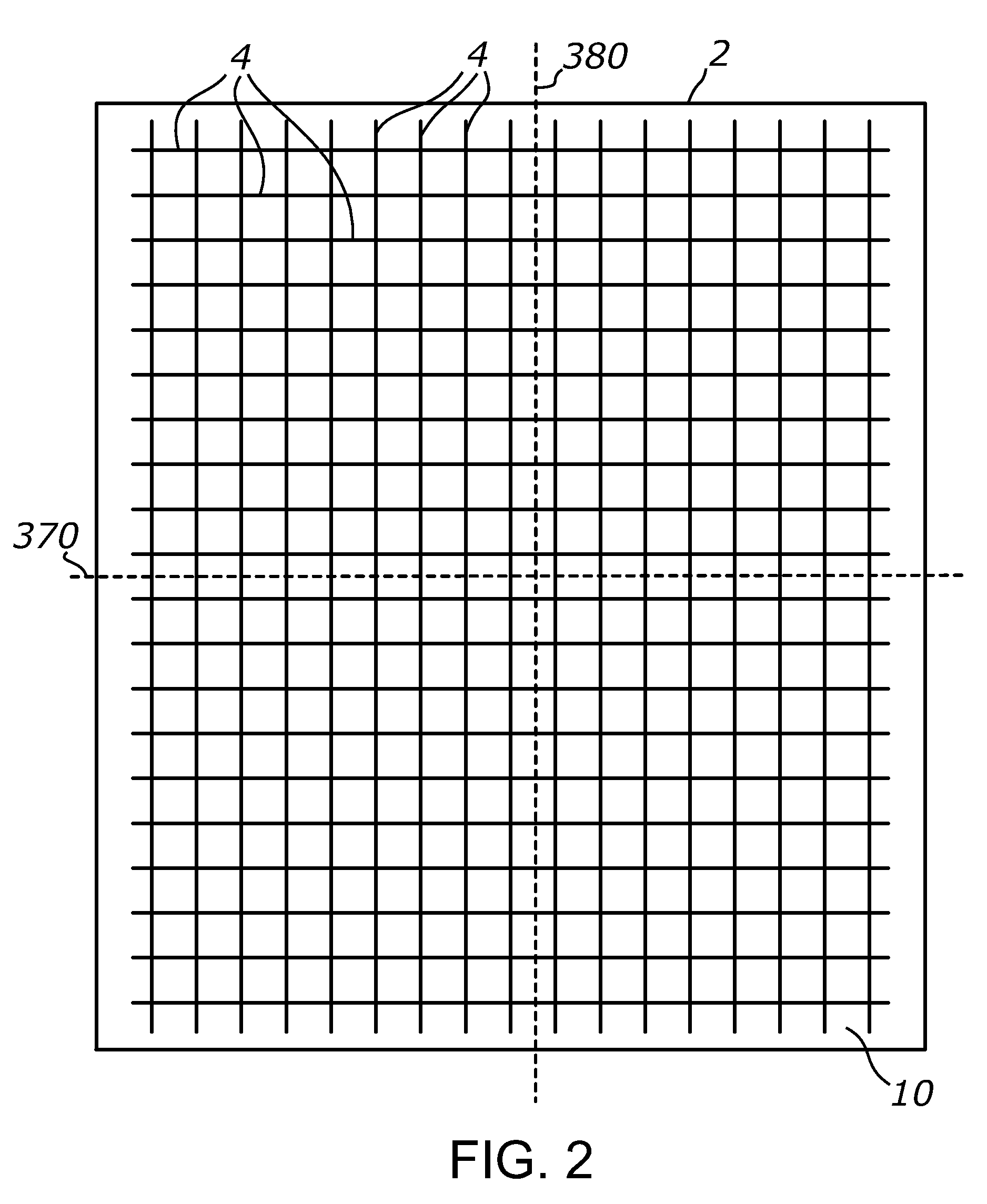Optical article for illuminating building interiors with sunlight
a technology for building interiors and optical articles, applied in the field of natural lighting, can solve the problems of wedge-shaped deformations (crazes) propagating within the material, internal tir structures, and little control over spacing, depth and exten
- Summary
- Abstract
- Description
- Claims
- Application Information
AI Technical Summary
Benefits of technology
Problems solved by technology
Method used
Image
Examples
example 1
[0112]FIG. 30 shows a photograph of a prototype sheet 2 made by cutting a grid of narrow channels 4 in a 0.25-inch acrylic (PMMA) sheet by means of material ablation using a 60-W CO2 laser. The laser emits a narrow (about 6 mm) parallel beam with the wavelengths of about 10 micrometers. The laser beam was made scanning across the surface of sheet 2 using a Cartesian gantry system and a system of mirrors and focused on the surface of the acrylic sheet using a 0.75″-diameter ZnSe lens having a focal length of 2″. The laser beam scanning speed was selected at about 14 mm / sec.
[0113]A first array of parallel channels was cut in one of the smooth surfaces of the acrylic sheet after which a second array of parallel channels was cut in a perpendicular direction in the same surface. The selective material ablation by scanning the focused laser beam across the acrylic sheet surface has resulted in the formation of a rectangular grid of narrow and deep channels in the surface. The laser cuttin...
example 2
[0117]Laser-cut channels were produced according to the method described above in a ¼″ acrylic sheet having a light-scattering, matte-finish surface. The illumination of such light-scattering variation of sheet 2 with an off-axis beam with approximately 45° incidence angle has produced a broad, relatively evenly distributed, scattered beam of light spanning approximately ±60° from a normal to sheet 2 in the prevailing plane of beam propagation. The total angular span of the scattered beam was around 120°. For comparison, the off-axis parallel beam illumination of a similar light-diffusing acrylic sheet having no channels 4 and no TIR walls has resulted in much narrower scattered beam (less than 60°) and light propagation only towards the opposing direction from the light source, exhibiting notably unequal light distribution on the target. Accordingly, the formation of laser-cut TIR channels in the surface of acrylic sheet has produced a light beam which angular spread is approximate...
PUM
| Property | Measurement | Unit |
|---|---|---|
| angle | aaaaa | aaaaa |
| dihedral angle | aaaaa | aaaaa |
| dihedral angle | aaaaa | aaaaa |
Abstract
Description
Claims
Application Information
 Login to View More
Login to View More - R&D
- Intellectual Property
- Life Sciences
- Materials
- Tech Scout
- Unparalleled Data Quality
- Higher Quality Content
- 60% Fewer Hallucinations
Browse by: Latest US Patents, China's latest patents, Technical Efficacy Thesaurus, Application Domain, Technology Topic, Popular Technical Reports.
© 2025 PatSnap. All rights reserved.Legal|Privacy policy|Modern Slavery Act Transparency Statement|Sitemap|About US| Contact US: help@patsnap.com



